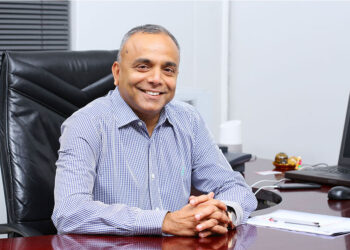- Horst Simon
Modern risk management focuses more on human factors than on processes, procedures, and adherence to standards and frameworks. There is no one-size-fits-all approach. You can follow standards and frameworks to the letter and still be ineffective at actual risk management, purely due to human factors such as conduct and the risk-response decisions made by individuals.
The outcome of most current risk management efforts is often a “green” risk report based on historical data from the previous financial quarter; a corporate document that adds little value to actual decision-making months later. Modern risk management is shifting away from discussions centred on outdated, colour-coded reports towards the effective management of risk by all employees through prudent and informed decision-making.
Success in effective risk management lies in the quality of information available to evaluate risk and make informed decisions at the right time. Organisations invest significant time and effort in developing robust risk mitigation frameworks and strategies to manage specific business risks. Despite constant monitoring through dashboards and reports, many still face major and unexpected issues. Although organisations may be well-prepared with relevant processes and infrastructure, they often struggle to cultivate a sense of risk awareness, responsibility, and intelligence throughout the organisation, resulting in gaps and deficiencies.
Here are some key elements of building a Risk Intelligence system:
- Developing dynamic situational awareness
- Collecting risk intelligence from all sources
- Gathering internal and external information, including from social media
- Building internal pathways across the organisation
- Encouraging clear and unobstructed communication
- Ensuring that bad news travels faster than good news
- Distinguishing between what is real and what is fake
- Enabling others to succeed
Clear and unobstructed communication is particularly important in the process of collecting risk intelligence from all sources and establishing internal pathways across the organisation, where bad news must travel faster than good news. Risk intelligence requires every individual in an organisation to take responsibility for identifying, reporting, and managing risks in day-to-day operations.
Failure to uncover risks leaves organisations unaware of the build-up in risk. Employees often do not flag or report new risks or increased risk exposure, sometimes because they believe the risk is unlikely to materialise and cause a loss.
As mentioned, bad news must travel faster than good news. Receiving bad news in good time is always better than being surprised when it comes to risk management. A key factor in mitigating risk (or containing its impact) is having enough time to find an effective solution to the bad news. Success is achieved when you influence your organisation’s risk culture by raising risk implications early in all relevant discussions and throughout the decision-making process. The future of risk management lies in the ability to inspire and incorporate more of the behaviours we desire—both those we want to encourage and those we seek to avoid.
Now is the time to start with Dynamic Situational Awareness as it relates to effective risk management.
Dynamic situational awareness is the ability to continuously perceive, analyse, and respond to the ever-changing environment around you. In today’s fast-paced world, where risks and threats can emerge suddenly, being attuned to your surroundings is crucial. This skill goes beyond simply noticing what is happening; it involves understanding the significance of what you observe and anticipating potential outcomes. By cultivating dynamic situational awareness, you position yourself to make informed decisions quickly, enhancing your ability to manage risks effectively.
To develop this skill, one must engage in consistent practice and real-world exercises that challenge awareness in unpredictable environments. Start by placing yourself in situations where you need to monitor multiple elements simultaneously—busy streets, crowded events, or even social gatherings. Focus on observing people’s movements, paying particular attention to their body language and the objects they handle. This practice sharpens perception and trains the mind to process information rapidly, allowing you to detect subtle cues that may indicate a potential threat or opportunity.
Developing dynamic situational awareness requires a proactive mindset. It is not just about reacting to what is in front of you but also about anticipating what might happen next. This foresight is crucial in both personal safety and professional settings, where the ability to stay ahead of situations can make all the difference. By continuously honing your situational awareness, you become more resilient and adaptable, capable of navigating complex environments with confidence and precision.
“Making others succeed” is another key mindset required for success in building a Risk Intelligence System. When we seek to retain and attract people, we do so based on their skills—their aptitude. However, when we let people go, in about 90% of cases, it is due to their attitude.
So, what are the differences between aptitudes and attitudes?
- Aptitudes are our potential to learn skills, which we develop and refine over time. What works, you continue using. What does not, you strive to change. However, aptitudes alone cannot carry you all the way to success.
- Attitudes determine what and how much you can achieve. It is like an engine; it can either slow you down or accelerate you while still moving forward.
The fundamental difference is that you can train people to address weaknesses in aptitude, but you cannot train them out of an attitude weakness. Attitude is internal to the individual, and you cannot motivate a person to change themselves; they must be self-motivated to change.
Reflect on this: learn to thrive on bad news, practice effective risk management, and do not accept surprises.
Horst Simon is a Global Thought Leader on Risk Culture Building and currently serves as a Business Risk Officer at the Capricorn Group in Namibia. He is also the founder of Global Risk Culture Builders, a group of associates promoting Risk Culture Building and coaching risk practitioners. The Capricorn Group is a financial services group operating in Namibia and Botswana.









